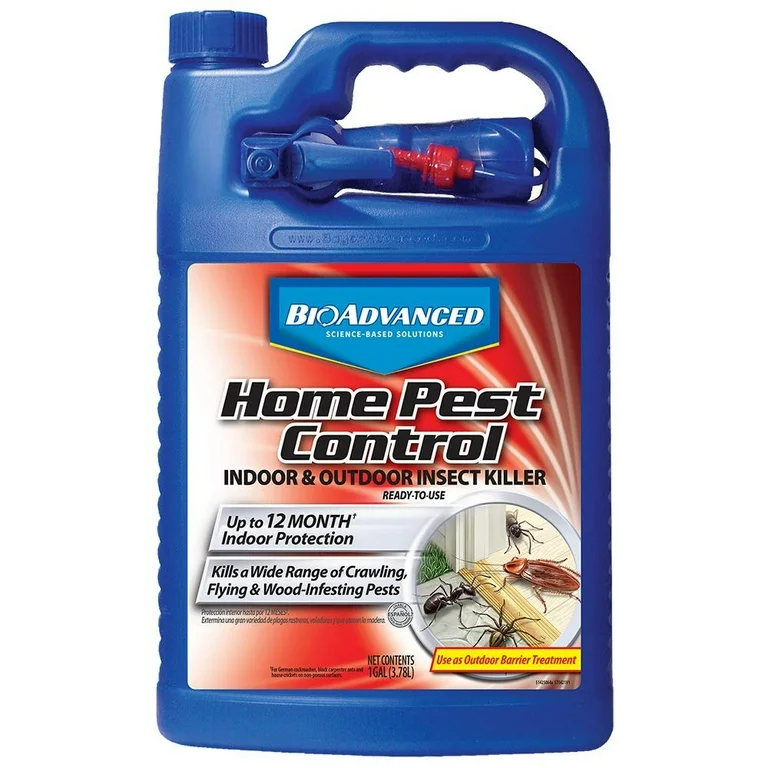A1 Charlotte Pest Control Companies - Your Neighborhood Pest Specialists
Wiki Article
Bed Bug Treatment Failure: Comparing Chemical Vs. Non-Chemical Solutions
In the world of pest control, especially when managing the persistent issue of bed insects, the selection in between chemical and non-chemical therapy remedies can be a critical one. Both strategies offer unique benefits and drawbacks, influencing variables such as effectiveness, safety and security factors to consider, and total price. By examining the nuanced information of each method, a clearer understanding of which path to pursue in attending to a bed pest infestation can be achieved.Efficiency of Chemical Treatments
Chemical treatments for bed insect problems have actually been extensively acknowledged for their potent and quick effectiveness in removing these insects. When thinking about the efficiency of chemical treatments, it is crucial to understand that they can provide a thorough and fast option to a bed insect problem. Specialist pest control experts usually depend on pesticides to target bed pests at various phases of their life process, including nymphs, adults, and eggs. These chemicals commonly function by interfering with the bed insects' nervous system, bring about paralysis and eventual death.Additionally, chemical therapies have the advantage of offering recurring effects, suggesting that they can continue to get rid of bed bugs also after the initial application. This residual activity is particularly advantageous in combating any prospective re-infestations. Furthermore, the quick activity of chemical treatments can bring relief to people facing serious bed pest infestations, enabling them to reclaim control of their living rooms rapidly.
Safety And Security Interest In Chemical Solutions
One essential aspect that needs careful factor to consider when utilizing chemical remedies for bed pest treatment is making certain the security of passengers and the environment. Direct exposure to certain chemicals made use of in bed insect treatments can lead to respiratory concerns, skin irritation, or various other damaging reactions, especially in people with pre-existing problems or sensitivities.Additionally, the ecological effect of chemical solutions is one more substantial consideration. Some pesticides made use of in bed pest treatments might be damaging to advantageous pests, wildlife, and ecological communities if they leach right into the soil or water systems. It is important to make use of chemical therapies judiciously, complying with safety and security guidelines, and taking into consideration less hazardous choices to mitigate these risks and ensure the efficient and secure management of bed bug invasions.
Advantages of Non-Chemical Approaches
Thinking about the possible security worries and ecological impact associated with chemical solutions for bed bug treatment, exploring non-chemical strategies provides an encouraging choice with numerous distinct advantages. Non-chemical treatments are eco friendly, as they do not additional hints add to air or water air pollution, making them a sustainable option for insect control.Additionally, non-chemical services can be reliable in targeting bed insects, including hard-to-reach areas where chemical treatments might not penetrate - A1 charlotte bed bug exterminator. Approaches such as warmth therapy, vacuuming, vapor cleaning, and mattress encasements provide comprehensive eradication without the usage of harmful chemicals.
Limitations of Non-Chemical Treatments

Additionally, non-chemical treatments often call for numerous applications to achieve successful removal. This can be time-consuming and may not constantly assure full elimination of all bed insects and their eggs, specifically in hard-to-reach or covert areas.
Additionally, the success of non-chemical therapies heavily counts on proper application and thoroughness, which can be challenging for individuals without specialist knowledge. Insufficient application of non-chemical approaches might cause incomplete elimination, bring about persistent infestations and the requirement for extra therapies.
As a result, while non-chemical therapies have their advantages, it is important to recognize these constraints and consider them when establishing one of the most reliable approach for taking care of bed click now bug infestations.
Cost Comparison: Chemical Vs. Non-Chemical Options
Provided the constraints associated with non-chemical therapies, a vital element to examine in the context of bed pest administration is the price comparison between chemical and non-chemical alternatives. In comparison, non-chemical treatments like heat therapy or steam can be extra expensive, with prices ranging from $1,000 to $6,000 for a whole home. While the first cost of chemical treatments might seem lower, several therapies might be called for to fully remove the invasion, possibly increasing the general expense.Final Thought

Thinking about the prospective safety and security worries and ecological effect linked with chemical options for bed bug treatment, exploring non-chemical approaches offers an encouraging alternative with several distinctive advantages.Given the limitations connected with non-chemical treatments, a vital aspect to evaluate in the context of bed insect administration is the cost contrast in between chemical and non-chemical alternatives. In rodent control company comparison, non-chemical treatments like heat therapy or steam can be much more pricey, with expenses ranging from $1,000 to $6,000 for an entire home. While the first expense of chemical therapies might appear lower, multiple therapies might be needed to totally eliminate the problem, potentially increasing the total price.In conclusion, when contrasting chemical and non-chemical bed insect therapy choices, it is important to think about efficiency, security, advantages, limitations, and cost.
Report this wiki page